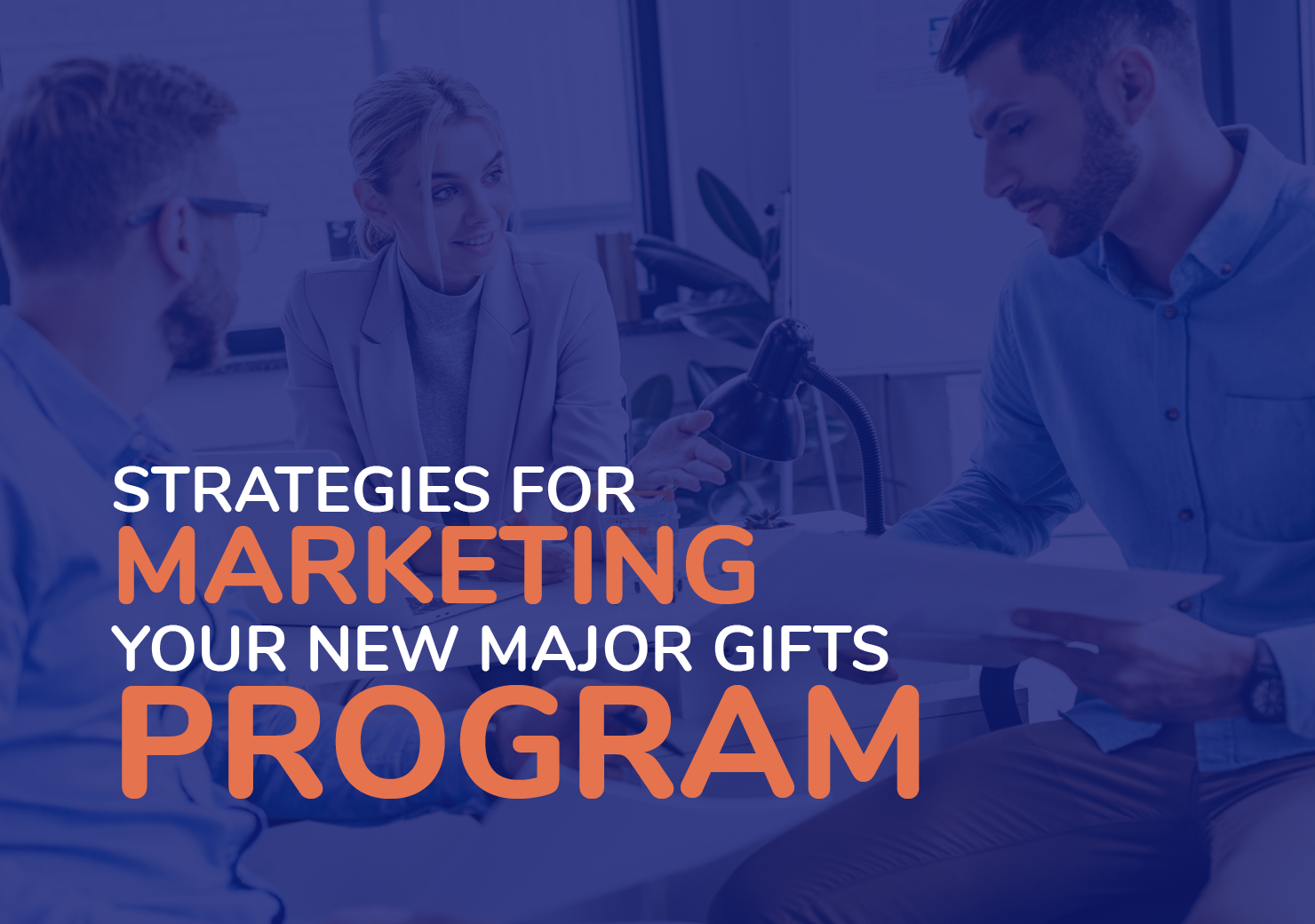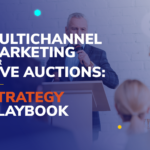5 Strategies for Marketing Your New Major Gifts Program

Your nonprofit’s need to make the most of its limited resources likely causes your team to spend much time and effort on successful marketing strategies. Between fundraising events and various campaigns, different fundraisers require different marketing approaches.
If you’ve just launched a major gifts program, you’ll need a fresh plan for marketing the new giving opportunity. Let’s explore five strategies you can use to market your new program.
1. Lean on your existing network
When you’re looking to garner more support for your cause, your first instinct may be to acquire new donors. You invest in nonprofit fundraising software and purchase or rent prospect lists—but have you considered first looking toward your existing base of support?
Current supporters are already committed to your cause and your organization, whether that be through the willingness to give financially, commit to recurring gifts, or offer another form of support. Plus, wealth screening could uncover a cohort of supporters already in your database with the means and inclination to become major donors!
To identify an audience within your existing network for your major gifts program marketing strategies, evaluate your:
- Current donors are already in place, and sometimes, all you need to do is ask the right question. If you’re planning a capital campaign or other major fundraising effort, clearly define the goal and how it will be used, then promote the effort with tiered giving. If a donor pledges a certain amount, perhaps they get a table at an upcoming event or personal thanks on a website or social media.
- Active volunteers are committed to your cause and are willing to spend a precious resource—time––supporting it. Launching an effort to convert these volunteers into donors is an important step, as it puts them in a position to be nurtured for a major gift.
- Board memberscan be counted on to have vast networks. Provide them with the tools to reach out to their friends and coworkers, such as one-pagers or cards describing the growing need and your response. Quantify each level of giving, tying a direct benefit (meals prepared, acres of rainforest saved, pets rescued) to a level of giving.
- Supporters’ peers are often aware of your organization but haven’t yet committed to joining forces. By asking your existing supporters to bring a “plus one” to your events, you’ll tap into a whole new audience of potential donors with their own giving affinities and capacities.
Even if you don’t have MacKenzie Scott lurking in your donor pool, your donors should be made aware of your efforts to procure major gifts. They might know prospects, or may even suggest a corporate giving program that is incentivized or mandated to disburse large sums of money to nonprofits.
2. Put your data to work
Data should drive most of your nonprofit’s operations, from donor engagement efforts to strategic planning—and your major gifts program marketing.
Robust software can collect and analyze donor data that indicates whether people are capable of and inclined towards major gifts. They can also help you personalize your outreach and tailor your campaigns.
Types of data you should analyze include:
- Giving history, including previous donation amounts and frequencies
- Event participation
- Volunteer activity and other noncash contributions they’ve donated
- Wealth indicators
- Program interests
- Communication preferences
Nonprofits can use this data to segment donor databases and craft personalized appeals that resonate with prospects. For example, if you identify a group particularly interested in one aspect of your impact, an email highlighting this need and showing how contributions will help is an effective way to reach potential major gift donors.
3. Highlight the impact of major gifts
While major gifts offer a significant fundraising boost, there’s another reason they can provide long-term help to your nonprofit: social proof. When your nonprofit can demonstrate a measurable effect on a shared mission, it inspires confidence and attracts new donors.
This social proof can also be a powerful tool in encouraging one-time donors to become monthly donors, monthly donors to give larger gifts, and any donor to become a major donor.
With the right fundraising platform, your nonprofit should be able to easily track donations and your resource allocation to measure how much was raised and how it was spent. This way, you can draw direct connections between major donations and the impact they were able to make.
To add emotional appeal to this information, incorporate the following into your marketing materials:
- Beneficiaries’ stories: There is no better motivation than hearing the front-line stories of how contributions to your nonprofit change lives! Highlighting the impact of major gifts on real lives is a compelling argument for those who are considering a significant gift.
- Volunteer testimonials:Because volunteers are intimately involved in your nonprofit’s work, they are excellent advocates for your cause. According to NXUnite by Nexus Marketing’s storytelling tips, personal narratives can add authenticity and emotional depth that help build your case for support.
- Visual elements: Elements like photos and videos can quickly grab donors’ attention and point them to the result of your major gift program. When recipients can visualize the impact your program was able to make, they’ll become more connected to your work.
Using specific examples of your nonprofit’s impact on your mission can encourage donors to convert to major givers. They’re already invested for a reason; amping up the benefit of contributing can quickly help amp up the gifts.
4. Market across multiple channels
When donors see your message through multiple channels–direct email, online, social ads, Google Ads, phone calls, and text campaigns–the visibility of your mission, your programs, and your impact is heightened. Multichannel campaigns are proven to increase engagement!
- Email marketing: Email remains the workhorse for nonprofits. Enroll current donors in an email sequence that nurtures them and communicates the value of major gifts.
- Social media: Social media is a great place to showcase high-impact photos and videos that compel giving.
- Your nonprofit’s website: Develop a content strategy for your website, including educational and transparent content across cohesively branded pages. This can instill confidence in potential major donors when they visit your website to learn more about your major giving program.
- Direct mail: Contrary to the rumor that direct mail is dead, many people (and certain demographics) much prefer direct mail. It’s trustworthy, it’s not aggressive, and it allows recipients to respond in their own time.
Now that you’ve considered channels, what should you share in these marketing materials? Don’t assume donors understand what major gifts are and why they’re so important. Educate them on this level of giving, share incentives to join the program, and clearly indicate any major giving tiers.
5. Invest in relationship-building
CharityEngine’s guide to nonprofit donations defines major gifts as “the byproduct, or result, of a strong relationship with a donor.” In other words, your nonprofit must foster authentic and meaningful relationships with donors in order to cultivate major gifts.
Invest in relationship-building by:
- Creating personalized outreach
- Showing donor and volunteer appreciation
- Offering exclusive opportunities
Donors are more likely to give when they feel a connection with a person and a passion for a mission. This is most certainly true of major gift donors! Building strong relationships with all your donors lets you quickly identify those who can move through the funnel, ultimately resulting in major donors.
When your nonprofit is ready to pursue major gifts, these proven strategies can help outline your outreach. Fortunately, major gift prospects are everywhere. It’s in crafting the right message, leveraging the right data, and using the right channels nonprofits can capture that philanthropy.


